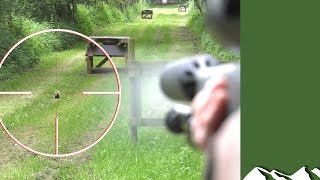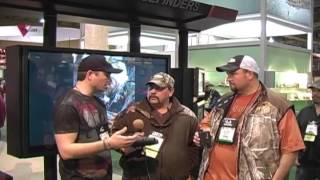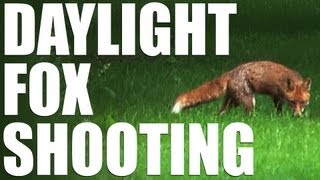Friday, 19 December, 2025г.
















Где искать: по сайтам Запорожской области, статьи, видео ролики
пример: покупка автомобиля в Запорожье
Roe, range finders and Russian scopecam
Deer manager Paul Childerley is in Gloucestershire to stalk and cull roebucks. On a glorious English summer's evening, what better way is there to shake off the cares of the world? The buck season is well underway and he wants to bring down numbers before the crops grow and they become hard to spot. He also gets to try out the new rangefinder from Zeiss.
▶ For the new Zeiss rangefinder, visit http://bit.ly/zeissrangefinder
▶ Paul's clothing is by Shooterking http://www.shooterking.co.uk
▶ For Sako rifles, visit http://www.sako.fi/
▶ For David's weird RusBear scope cam, go to http://scopecam.pro/
▶ To go shooting with Paul, visit http://www.childerleysporting.co.uk
This item appears on YouTube in Fieldsports Britain, episode 441 http://bit.ly/fieldsportsbritain441
Sign up for our weekly email newsletter http://www.fieldsportschannel.tv/register
We’re proud to promote enjoyment of fieldsports and the countryside. There are three guiding principles to everything we do on Fieldsports Channel:
▶ Shoot responsibly
▶ Respect the quarry
▶ Ensure a humane, clean and quick kill
Take part in nature. Join the Fieldsports Nation https://Fcha.nl
Why shoot deer?
There are more than two million red, roe, fallow, sika, muntjac and Chinese water deer in Britain’s countryside and semi-urban areas, the highest level for 1,000 years. Numbers have doubled since 1999, according to the Deer Initiative, the UK government’s deer agency.
Deer are an attractive and an important part of our wildlife. However, they have no natural predator in the UK so numbers must be sensibly and strategically managed to keep them in balance with their habitat and to prevent damage to crops, trees, woodland flora, gardens and other wildlife.
Deer cause £4.5 million-worth (Forestry Commission Scotland) of damage to plantations and other commercial woodlands in Scotland. Crop damage is estimated at £4.3m a year according to DEFRA, with the greatest damage on cereal crops in east and south-west England.
More than 8,000 hectares (Parliamentary Office for Science and Technology) of woodland with SSI status is currently in ‘unfavourable’ or ‘recovering’ condition due to deer impacts such as browsing and fraying. Deer can also influence the variety of wildlife in woodlands and other habitats by altering structural and plant species diversity. According to the University of East Anglia’s Dr Paul Dolman, that has resulted in a 50% decline in woodland bird numbers where deer are present, impacting particularly on nightingales, blackcaps, chiffchaffs and warblers.
Deer are susceptible to Bovine TB and may be responsible for the transmission of TB to cattle. They are also the likely driver behind the UK’s increasing tick population (Scharlemann et al 2008).
Happily, venison is a delicious meat. It is wild, natural and free range, and – almost fat-free – it is one of the healthiest meats available today. Results from research commissioned by the Game-to-Eat campaign (Leatherhead Food International Research 2006) suggest that there are real health benefits to eating game. Venison is high in protein, low in saturated fatty acids and contains higher levels of iron than any other red meat.
Похожие видео
Мой аккаунт


 У вашего броузера проблема в совместимости с HTML5
У вашего броузера проблема в совместимости с HTML5


